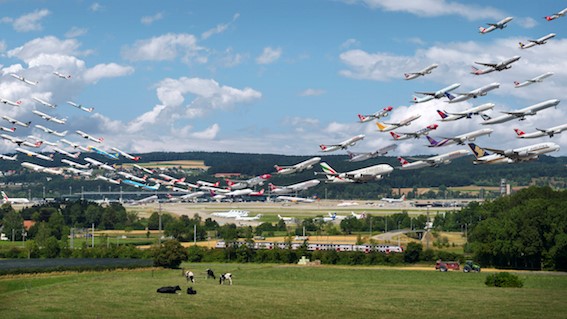Had the gears of our planetary civilisation been working routinely these past few days, we would have been introducing our exhibition, Civilisation, Photography, Now, to a curious Auckland public. We would have flown in from China and Switzerland, joined by FEP director, Todd Brandow from France. All routine flights, with no more than some possible minor inconvenience somewhere along the way. For 20-some hours we would have shared one of our civilisation’s astonishing achievements, next-to-seamless air travel, along with another two million people – because, at any moment, that’s how many people are in the air, comprising an airborne city greater in size than Auckland. And of course, we’d have taken our half-way-around-the-world journeys for granted. What none of us had bargained for was that this fluid mobility would also be exploited by a virus!
We were prepared to walk through the exhibition with staff and visitors, explaining our ideas and our choices of specific photographs, and perhaps even arguing about why this or that photograph was included, or what it told us. We’d even have enjoyed heated debates! What is civilisation? Is there a single, planetary form of civilisation emerging, or are the long-living individual civilisations of the world doomed to clash, as scholar Samuel Huntingdon believes? We would have looked at how photographs can help us visualise and understand the complex civilisational machinery human beings have contrived.
‘Civilisation’ is a big word, and no two scholars (or curators) can seem to agree on a concise definition. And yet everyone shares a general sense of what it means: a highly advanced human society (above clan, tribe, nation, even empire); city-centered, with technological prowess and mastery of the environment; kept more or less in decent social order; with highly developed arts and sciences; and dealing intelligently with threats as they arrive. As we all are doing now, with a natural one.
We’re disappointed not to have been with you as planned and are saddened and expectant watching the situation unfolding around the world. During our opening lecture, we would have projected the website flightradar24, which maps all the commercial and cargo planes travelling the world in real time, some 10,000 at any one normal moment. Today, in an unprecedented turn of events, the skies around the world would now look nearly empty.
We would have explained how photographers show us the increasing density of cities as a defining trend in the 21st century, and how they make visible the intricate global supply chains for food, goods, technology and information. We would probably have made the point that most of these daily movements and transactions go largely unnoticed by most of us as we go about our daily lives.
We would have also talked about photography of government, religion, media, and systems of keeping order both within communities, countries and between nation states. With the arrival of Covid-19, we are all seeing first-hand what a rupture can do to our systems, our processes, our overall way of life. Now we are all acutely more aware of where our food comes from, where our medical supplies originate, and who our governmental representatives are – even on the lowest levels – because they hold the lives of our communities in their hands. If you asked us one year ago to imagine this world, it would have been unimaginable.
Still, we have reason to remain optimistic. Every day our health and science professionals are learning, thinking, talking, comparing, planning. Information is fast-flowing. We’re learning quickly about this invisible beast. And we’re all learning how to cope.
What an extraordinary moment! Our civilisation has always had its crises, but they have been essentially local, regional or national. Even the 20th-century’s two World Wars did not affect every part of the world simultaneously to the same degree. This crisis has. People are sharing experiences in an unprecedented way. They are trading tips, commiserating, supporting each other. How lucky we are to have our modern communications. We can quickly check with a friend in Alaska or Buenos Aires, San Francisco or Frankfurt. A hundred years ago, in such a situation, we would have been socially isolated, with only the radio to provide the basic facts we needed. We are no longer. We are connected as never before, and aware, as never before that we are all in this together.
At the opening of the exhibition at its first venue in Seoul, South Korea in 2018, some of the artists present discussed how they felt the exhibition could fulfill a certain function as a ‘time capsule’. Although it was never conceived as such, it seems inevitable we will all be viewing this project and the work of the photographers who have captured these moments through new eyes when the exhibition opens its doors.
There is no doubt that these are trying and exceptional times, but we human beings have resources to draw upon, and the human imagination is one of them. We like to think of photography as civilisation’s eyes, and right now, we’re sure they’re wide open.
Article written by Civilisation, Photography, Now curators, William Ewing and Holly Roussell.
Civilisation, Photography, Now is co-produced by the National Museum of Modern and Contemporary Art, Seoul, and the Foundation for the Exhibition of Photography, Minneapolis and Lausanne. Ron Brownson is the co-ordinating curator for Auckland Art Gallery.
Civilisation, Photography, Now is supported by Principal Partner AUT with Major Partners Beca and Jasmax, and Media Partners QMS and Mai FM.
